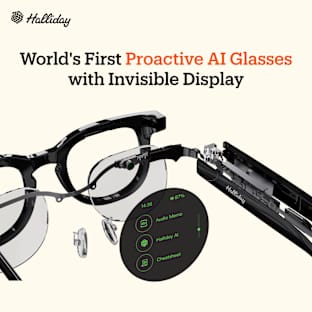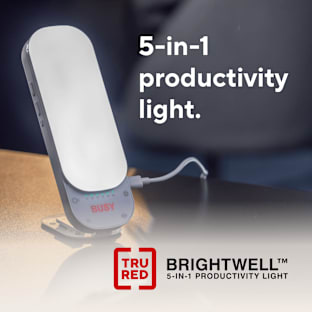![]()
![]()
In just 2 minutes per day, you can use CorSense to achieve goals like:
- improving physical performance (i.e. get faster, fitter, stronger)
- managing stress and the hectic challenges of life
- improving overall health and biological aging
- enhancing mental performance at work, and fighting anxiety.
How can CorSense help you do this in such a short time?
CorSense accurately and conveniently measures Heart Rate Variability (HRV), one of the most powerful biomarkers in use today (much more than just heart rate!).
HRV provides a direct link to your nervous system - the main control center of your entire body and mind.
By monitoring nervous system activity for 2 minutes each day, our adaptive and intelligent algorithms help you learn your individual stress and recovery patterns.
When exercise, sleep, mental stress, and other lifestyle factors impact your patterns, we help you detect these changes and respond optimally to make progress towards your goals.
Over time, this helps you build deep and actionable awareness of your body and mind.
CorSense brings crucial HRV accuracy to this process (unlike most wearables), and the speed and convenience to fit into your routine (unlike chest straps and adhesives).
![]()
![]()
Measuring HRV used to be expensive and inconvenient - limiting its use mainly to specialty clinics or big budget sports teams.
Now, capturing accurate HRV is simple:
![]()
![]()
HRV is NOT Heart Rate.
Heart Rate Variability (HRV) is an accurate, non-invasive measure of the Autonomic Nervous System (ANS) - which responds to everything: how you exercise, recover, eat, sleep and perceive stress.
Unlike basic heart rate (HR) that counts the number of heartbeats per minute, HRV looks at the exact changes in time between successive heartbeats (also called inter-beat intervals or RR intervals).
![]()
The Autonomic Nervous System (ANS) consists of two branches:
![]()
By trending short HRV readings on a daily basis, our adaptive algorithms help you learn what your "normal" ANS patterns look like, and then automatically guide you in improving those patterns over time.
![]()
Today, people use HRV to:
- Improve resilience and adaptability
- Reduce stress
- Optimize training and recovery
- Personalize nutrition and sleep
- Improve mental health - mood, depression, anxiety
- Improve mental performance and cognition
- Identify risk of disease, morbidity and mortality
- Measure systemic inflammation
- Track progress and guide treatment plans
- Re-balance the nervous system with live biofeedback
- Objectively understand motivation and willpower
- Provide early warning signs for changes in health, overtraining or maladaptation
Now that you can accurately and conveniently track your nervous system, you can make better health, training, and recovery decisions to reach your goals. In the “Science” section below, we explore these topics further.
Here are a few real life, unedited stories from current users benefiting from HRV:
Dr. Dan Plews - Sport Scientist, High Performance Coach and Athlete - plewsandprof.com
Jan Taborsky - Entrepreneur and Runner - happycampersgf.com
Caroline Thomas - Health Coach and Personal Trainer
To learn more about using the power of HRV, read on to our "Science of HRV" section.
![]()
We designed CorSense from the ground up to capture accurate HRV, so the benefits of HRV would be more accessible and convenient.
![]()
![]()
![]()
![]()
![]()
![]()
![]()
Unfortunately many wrist wearables and smartwatches are not good at tracking accurate HRV. By contrast, CorSense is comparable in accuracy to a 5-lead EKG/ECG for HRV and pulse waveform, using multiple different LEDs, onboard algorithms and filters, fast sampling rates and physiologically optimized sensors.
![]()
![]()
![]()
![]()
We also designed CorSense to be a completely open platform. This means:
1) Raw data collected by CorSense is available for export/download; and
2) CorSense works with any open HRV app that offers Bluetooth connectivity - right out of the box.
However, for the full experience, we recommend using CorSense with the Elite HRV app.
![]()
![]()
With over 150,000 users from around the world, our app has been rated 4.5/5 stars on both Android and Apple.
Our users are health-seekers, doctors, wellness practitioners, coaches, athletes, sports teams, and researchers.
![]()
![]()
![]()
Here's an uncut demo of Jason taking his Morning Readiness HRV reading with the CorSense and the Elite HRV app.
![]()
The Team Dashboard is a premier tool for coaches, health practitioners, professionals, and researchers to analyze health and performance HRV data for their clients or members.
![]()
![]()
![]()
![]()
Heart Rate Variability (HRV) is a unique biomarker! It is:
- Comprehensive: it can track the physiological impact of exercise, diet, sleep and mental stress.
- Easy: It can be tracked non-invasively, in just 2 minutes per day. No need for 24/7 wearables, needles, blood or saliva samples!
- Responsive: The impact of these stresses show up in HRV instantaneously and can give daily insight into your progress.
- Individualized: Elite HRV tracks changes against your own baseline, not just against reference ranges or estimates from a general population.
Steps, basic heart rate, and other simple markers just don't stack up, and other biomarkers are expensive, invasive, or inconvenient to measure.
HRV is the change in time between successive heartbeats (also called inter-beat intervals, R-R intervals, N-N intervals, etc.). Unlike basic heart rate (HR) that counts the number of heartbeats per minute, HRV looks much closer at the tiny, millisecond fluctuations that occur between each heart beat in response to internal and external events.
![]()
HRV is a direct link to your Autonomic Nervous System and can therefore be used to gain insights into your nervous system, overall stress load and capacity to recover.
![]()
Your Autonomic Nervous System (ANS) controls the unconscious bodily processes and influences the functions of internal organs. Some internal processes regulated by the ANS:
- Heart rate
- Blood pressure
- Body temperature
- Electrolyte balance
- Digestion
- Respiratory rate
- Pupillary response
- Urination
- Sexual arousal
The ANS has two main branches:
- The Sympathetic Nervous System (SNS)
- The Parasympathetic Nervous System (PSNS)
The Sympathetic Nervous System controls your body’s “fight or flight” reactions in response to internal or external stressors. It stimulates blood glucose (to fuel your muscles), pupil dilation (to see tigers better), slows digestion/peristalsis (to focus energy on the present danger), and increases heart rate (to ensure adequate blood circulation to run or fight). The SNS is ideally activated to overcome short term stress situations such as running from a tiger or fighting an intruder. But this same response also occurs when you exercise, perform challenging mental tasks, get into an argument, or even launch a new product :).
The Parasympathetic Nervous System controls your body’s “rest and digest” responses and is associated with recovery. Parasympathetic activation conserves energy, constricts pupils, aids digestion, and slows heart rate. The PSNS is meant to help build for the long term and is needed to grow faster, stronger, and healthier.
The SNS and PSNS control the same organs with opposite effects. Both branches are always working and both are needed to maintain homeostasis (balance or equilibrium) in your body. With every single heartbeat, your nervous system is saying “slow down – speed up” based on feedback from all your senses, emotions, etc. A healthy nervous system has a balanced but strong push and pull between the Sympathetic and Parasympathetic branches. Heart Rate Variability is an accurate, non-invasive measure of the ANS and the balance between the SNS and PSNS branches.
![]()
The Sympathetic Nervous System’s physiological response to stress focuses on short term survival in lieu of long term health. This acute response can become chronic (constant, long term) in the presence of stress from modern daily life such as work, relationships, financial, environmental, dietary, physical, lifestyle choices, etc. Chronically accumulated stress from multiple sources can all contribute to drastically reduced health and performance over the long term.
A significant amount of research published over the past 50 years correlates Heart Rate Variability to:
- Disease risk and progression (diabetes, cardiovascular disease, respiratory diseases, gastrointestinal diseases, autoimmune conditions, etc.)
- Morbidity and mortality
- Biological aging and health
- Mental health, mood, depression, anxiety, PTSD
- Physical performance (HRV is heavily used in elite endurance and team sports to guide training and recovery)
- Injury prevention
- Guided rehabilitation
- Mental cognition
Now that you can accurately and conveniently track your nervous system, you can make better health, training, and recovery decisions to reach your goals.
![]()
Higher resting-state HRV scores signify the ability of the body to activate the Parasympathetic “rest-and-digest” response. Higher heart rate variability is correlated with:
- Increased fitness level
- Better health
- Better resilience
- Youthfulness
- Willpower
- Calm, positive emotions
Lower resting-state HRV scores signify an activated Sympathetic “fight-or-flight” response or suppressed Parasympathetic activity. This can indicate the body’s inability to engage recovery mode or an exhaustion of recovery capacity. This can be a temporary response to a previous day’s hard workout or poor night of sleep. Or this can be a chronic response to stress that results in reduced health and increased risk of disease. Lower resting-state HRV is tied to:
- Reduced fitness level
- Poor health
- Increased disease risk and inflammation
- Increased biological age
- Negative emotions
- Increased anxiety and depression
Luckily, we make analyzing and understanding your HRV score easy. The app lets you tag your HRV measurements with the important things going on in your life and then helps you analysis the results and provides daily HRV-based guidance.
![]()
We are a small group that decided to leave our day-jobs and come together to make a difference. We are not a big company, but we are passionate about helping people reach their health and performance goals. We believe that heart rate variability is one of the most powerful tools available to achieve this. We value transparency and collaboration because everyone is smarter and better when honestly working together.
![]()
![]()
A special thank-you to our collaborators!
![]()












































































